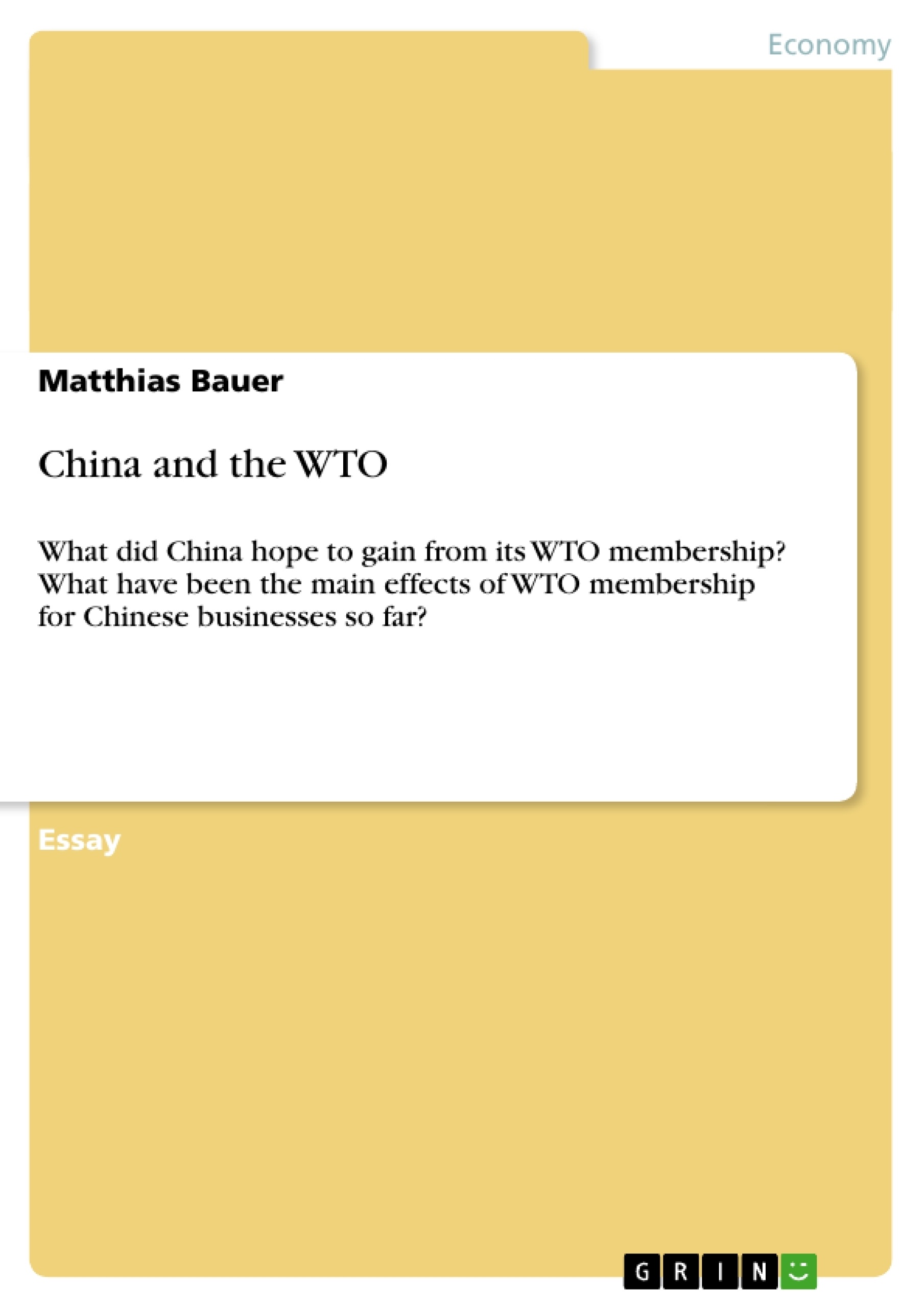After the formal acceptance of China to the World Trade Organization (WTO) on 11 December in 2001, the majority of Chinese and Western press praised the mammoth progress in the ambition to worldwide international free trade (Solinger, 2003). Mike Moore, the former Director-General of the WTO, proclaimed the advantages of China’s access to the WTO in an acutely optimistic way: “The benefits for China are clear. Opening its markets to foreign trade and investment will make it richer.” (Moore, 2000). The Chinese government also perceived the potential advantages for domestic economy. On the one hand foreign trading partners would enlarge their business activi-ties in China, if China’s authorities and businesses would operate within agreed rules and standards. Thus the increasing trade revenues could stimulate economic growth and development. On the other hand China could increase its political power by verifying to be a member of the community of the great trading nations which further would encour-age the Chinese as well as the Asian influence on world’s policy on trade (Holton; Lin, 1998).
The entry to the WTO exerts great impact on China’s businesses; small and medium sized firms as well as on state-owned enterprises. The Chinese companies more and more become element of international added value chains. International competition influences the efficiency of companies and privatization not stops in front of the doors of state companies. The paper will present what it took China to join the WTO and point out the main effects for the Chinese manufacture, financial and agriculture sector.
Inhaltsverzeichnis (Table of Contents)
- I. Introduction
- II. What China took to join the WTO
- The Objectives of the WTO
- China’s Entry into the WTO
- III. The Main Effects of the WTO Membership for Chinese Businesses
- Positive effects on Chinese businesses
- The effect on the manufacturing sector
Zielsetzung und Themenschwerpunkte (Objectives and Key Themes)
This paper explores the implications of China's WTO membership on Chinese businesses. It examines the motivations behind China's decision to join the WTO and analyzes the main effects of membership on Chinese manufacturing, financial, and agricultural sectors.
- China's motivations for joining the WTO
- The impact of WTO membership on Chinese businesses
- The role of foreign direct investment (FDI) in China's economic development
- The significance of the manufacturing sector in the Chinese economy
- The challenges and opportunities faced by Chinese businesses in a globalized marketplace
Zusammenfassung der Kapitel (Chapter Summaries)
- I. Introduction: This chapter introduces the context of China's WTO membership, highlighting the expectations and optimism surrounding the event. It outlines the potential benefits for China's domestic economy, including increased trade revenues and political influence.
- II. What China took to join the WTO: This chapter examines the historical background of China's WTO membership, exploring the steps China took to prepare for accession. It discusses the objectives of the WTO, China's economic reforms, and the challenges and concerns raised by existing WTO members.
- III. The Main Effects of the WTO Membership for Chinese Businesses: This chapter analyzes the key effects of China's WTO membership on Chinese businesses, focusing on the positive impacts on the manufacturing sector, financial services, and the overall economy.
Schlüsselwörter (Keywords)
Key keywords and themes in this paper include: China, WTO, economic reforms, trade liberalization, foreign direct investment (FDI), manufacturing sector, global competition, state-owned enterprises (SOEs), and the impact of globalization on business.
- Arbeit zitieren
- Matthias Bauer (Autor:in), 2007, China and the WTO, München, GRIN Verlag, https://www.grin.com/document/88822



